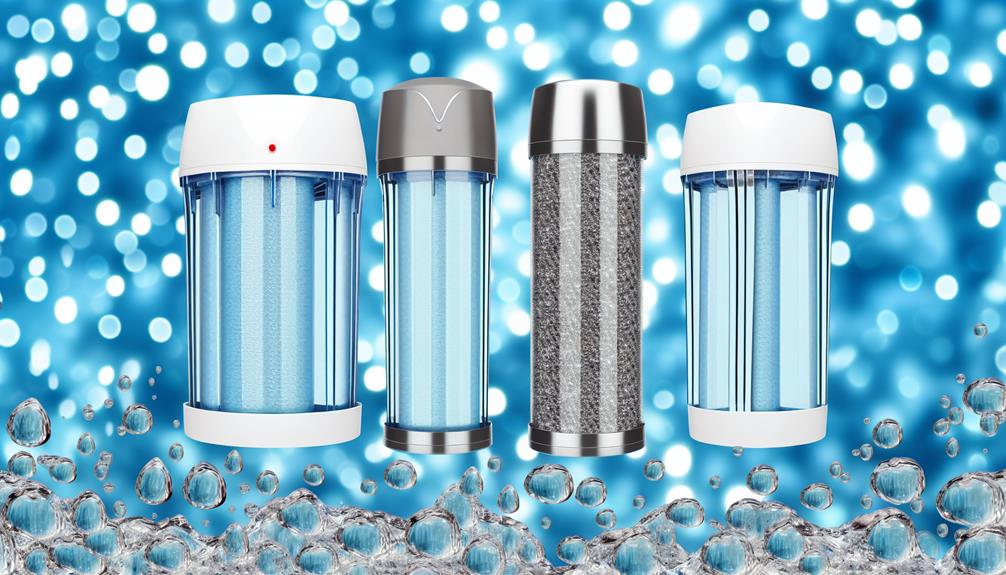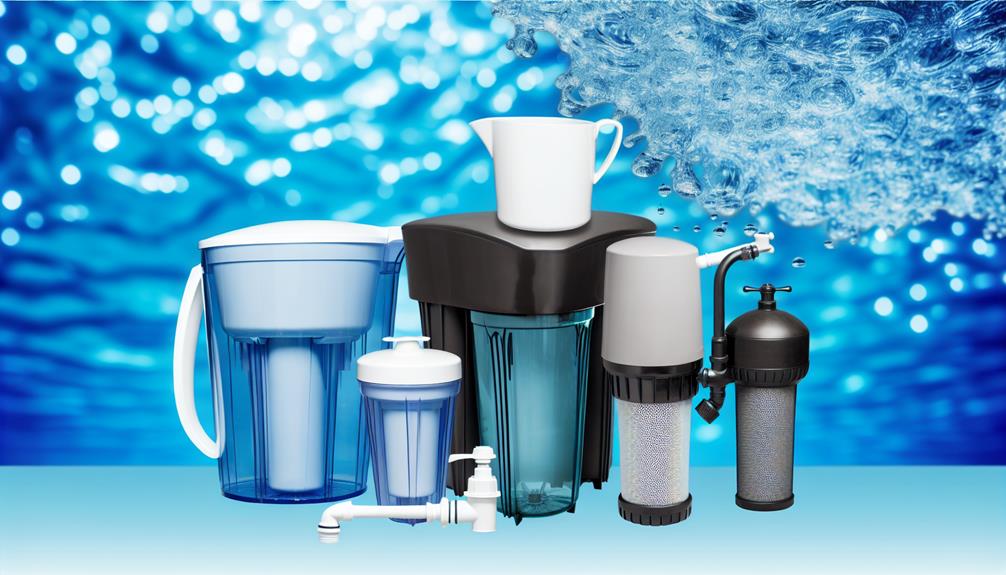Imagine a pristine stream, its clear waters cascading over smooth pebbles, untouched by impurities. Now, consider your tap water: it might not be the contaminant-free oasis you'd expect.
As you seek to safeguard your health and that of your loved ones, you've likely considered the myriad of chemicals that could be lurking in each glass. You're aware that water purifiers can be a line of defense, but the question remains—how do you effectively strip away these unwanted substances?
The answer lies in understanding the top five steps to eliminate chemicals using water purifiers, steps that are crucial for ensuring the purity of your water.
Whether it's identifying what's hidden in your H2O or choosing the most efficient technology, there's a roadmap to cleaner, safer water. Stick with me, and you'll uncover how these steps can transform the quality of your water and, ultimately, your peace of mind.
Identify Common Contaminants
Before you choose a water purifier, it's critical to recognize the various chemicals commonly found in tap water, such as chlorine, lead, and pesticide residues. Chlorine, while essential for disinfection in water treatment processes, can react with organic matter to form potentially harmful byproducts. Lead, a toxic heavy metal, can leach into drinking water from corroded pipes, posing significant health risks. Pesticide residues, remnants from agricultural activities, can persist through conventional water treatment and end up in your glass.
To ensure safe drinking water, you must select water purification methods capable of addressing these contaminants. Activated carbon filters are adept at removing chlorine and its byproducts, enhancing both the safety and taste of your water. Additionally, they can remove other contaminants, including certain pesticides, though their effectiveness varies based on the specific substance.
For heavy metals like lead, you'll require a system with a specialized filtration medium designed for ion exchange or reverse osmosis. These methods not only purify water but also remove a broad spectrum of other contaminants, including those not effectively treated by activated carbon.
When you're investigating how to achieve the purest water, analyze the specific contaminants present in your tap water and choose a purification system tailored to eliminate those chemicals, thus ensuring your water's safety and palatability.
Choose the Right Purifier
Selecting the optimal water purifier requires a careful analysis of both the contaminants in your water source and the specific purification technologies available. To ensure you choose an effective water purifier, consider the following aspects:
- Assess Contamination Levels: Different water sources harbor varying types and concentrations of contaminants. Ensure the water filter you select is tested and certified to remove the specific pollutants present in your water. Filters remove substances like sediment, bacteria, and heavy metals, but their efficiency varies.
- Understand Purification Technologies: Common technologies include reverse osmosis, which is highly effective at purifying water by removing a broad spectrum of contaminants; UV light, which neutralizes pathogens without adding chemicals; and chlorine dioxide, a potent agent that makes water safe by disinfecting it.
- Match Purifier to Needs: Consider the daily volume of water your household requires and choose a purifier with the capacity to match. Portable units are best for travel, while larger systems are suited for home use.
Install and Maintain Filters
Installing and maintaining water filters properly is crucial for the consistent and effective removal of contaminants from your water supply. Adhering to the manufacturer's recommendations for filter replacement and maintenance schedules is essential for ensuring your drinking water remains safe. It's important to monitor the condition of your filters and replace them when necessary to avoid the buildup of harmful substances.
Regular cleaning of filters is also critical to prevent clogging, which can compromise the efficacy of filtration. As water passes through the filters, trapped contaminants can reduce the flow rate and effectiveness of the filter, making regular inspection and cleaning an integral part of maintenance.
In some cases, the initial filtration may not be sufficient for your water source's specific contaminants. Therefore, you might need to install additional filtration systems. This step ensures that your clean water is free from any unique impurities present in your local water sources.
Regular Testing and Monitoring
While proper installation and diligent maintenance of water filters are critical steps, it's equally important to regularly test and monitor your water to ensure the continued effectiveness of your purification system. Source water quality can fluctuate, which means the performance of your filters must be routinely assessed to guarantee the production of potable water.
Consider the following steps to maintain water purity:
- Test for Contaminants: Utilize testing kits to measure levels of toxic substances, such as heavy metals or pesticides, in your unfiltered tap water. This will inform you whether your water purifier is performing to the expected standards.
- Check for Disinfectants: If you're using iodine or chlorine-based purification, ensure that the residual levels of these chemicals remain within safe limits. Chlorine dioxide, for example, is effective but shouldn't exceed recommended concentrations.
- Monitor pH and Boiling Point: Advanced systems, like pH20 Pure, provide real-time monitoring of water characteristics. Regularly check the pH to assess acidity or alkalinity, and note any changes in boiling point which can indicate the presence of impurities not removed by the filter.
Regular testing and monitoring are non-negotiable when it comes to safeguarding your health against the myriad of contaminants that can invade your water supply. Stay vigilant by collecting water samples and analyzing them to keep your system at peak efficiency.
Understand Purification Technologies
How do various water purification technologies compare in their effectiveness at removing different types of contaminants from your drinking water?
Boiling water is a primary method that kills bacteria, viruses, and parasites. Disease Control guidelines suggest boiling for at least one minute to ensure safety. However, this method won't remove substances with lower boiling points that can vaporize alongside water.
Chemical purification, such as with chlorine dioxide, is portable and can effectively kill germs, but may not address all pollutants.
Filtration systems physically trap particles, yet they require an activated carbon element to tackle chemicals and heavy metals. Not all contaminants will pass through the filter without this enhancement.
Read on to learn that distillation remains an option for purified water. It involves evaporating water and condensing the steam, leaving behind impurities. Yet, the process is energy-intensive and slow.
Reverse osmosis forces water through a semipermeable membrane, efficiently removing a wide range of contaminants.
Ultraviolet (UV) light disinfection, on the other hand, neutralizes microorganisms but doesn't remove chemical pollutants.
For comprehensive purification, combining these technologies can yield the most effective results in producing clean, safe drinking water.

